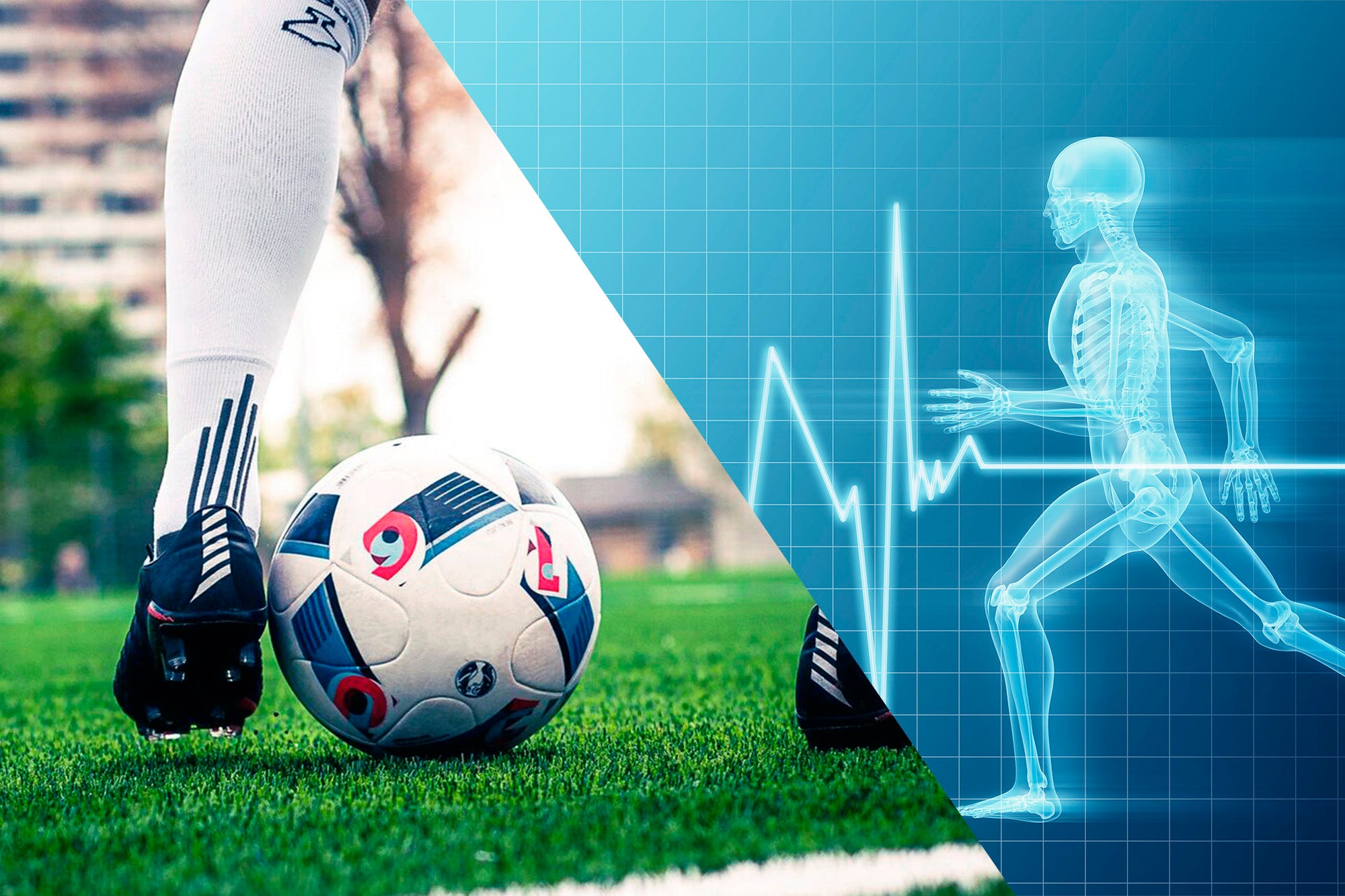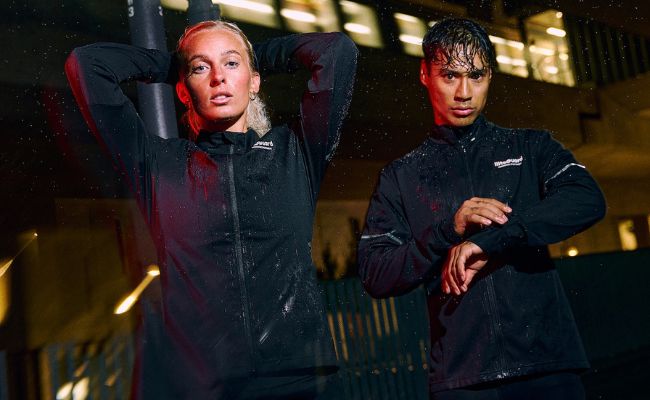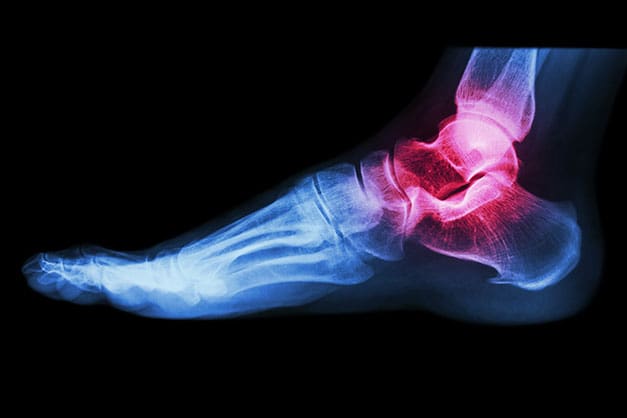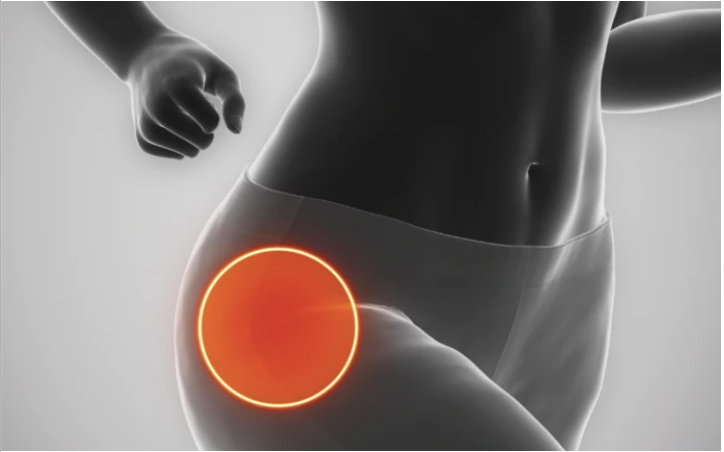
Injury prevention training for footballers
By: Nicklas Falkesgaard Pedersen, Physiotherapist at Protreatment and co-founder of Liiteguard
Since you already spend time on physical training, why not spend a bit of extra time preventing some of the most frequent football injuries?
Here I will make my suggestions on what I think is the most optimal injury prevention training program. If you're serious about your football, there are 6 exercises you should do to have the best conditions to keep you injury-free.
If you do all exercises, twice a week,you will have done yours to avoid injuries.
The tools you need can be found in a normal fitness center, and most of the excercises can actually be done at home.
The exercises are a combination of isolated strength exercises for the most exposed muscle groups, as well as stabilizing exercises where we work with the correct activation and control near the joints.
Under each exercise I will mention a little about the reason why you should do precisely this exercise.
- Nordic Hamstring - Hamstring
Hamstring injuries in the backside of the thigh is the most frequent muscle injury in football, and there is hardly a football team that does not have a minimum of 2-3 of these injuries over a season!
It's frequency has assured a great deal of attention being paid to hamstring injuries, and many have been looking for the most effective exercise when it comes to preventing it. And it seems that it has been found, in the form of the Nordic Hamstring exercise.
The exercise is an eccentric excercise, which means that you strengthen the muscle while it extends.
The exercise is relatively tough and you should therefore start out with few repetitions. A good place to begin is 3 x 6 repetitionsafter which you then gradually increase the number of repetitions.
Here's a link to the exercise:
- Copenhagen adductor - Groin
Groin injuries are also very frequent injuries in football. Both when it comes to overstretches, but just as much when it comes to overloads.
Again, a muscle group, with a lot focus on it, and right now "Copenhagen adductor" is the recommended exercise if you want to minimize your risk of groin injury. Again a relatively tough exercise, and here I recommend that you start at 2 x 6 repetitions,and increase gradually.
You can see how to do the excericse here. It can also be performed two and two if you have a training partner who helps you by holding your leg up:
- Ankle stability
Ankle injury is the most frequent traumatic injury in the lower leg, and the vast majority of injuries occur on the outside of the ankle.
An ankle sprain is usually a relatively short-term injury, but there are also cases where one or more ligaments are torn all the way through. This may require a somewhat longer rehabilitation, and usually will require a longer period of stabilizing tape, as you resume your normal training on the pitch.
There are a lot of good training tools that can be used to strengthen the ankle, but my favorite is by far a balance cushion.
When it comes to stabilizing exercises, there are a lot of opportunities to make the exercises tougher and harder. It's important that you find the level you're at, so you both challenge your stability, but at the same time work at a level where you get something out of it.
It may be, that you find it difficult to keep steady on a balance cushion and that you should therefore start by just standing on one leg on a flat floor, and will only later be able to train on a balance cushion or tilt board.
This video shows how you can train the stability in your leg on a so-called BOSU ball:
The more dynamically you can do it, the more transferable it is for your game on the pitch.
Dynamically means, in short, that you do certain movements while stabilizing. If you are a footballer, you can do small kicks while keeping your balance on one leg.
Here you can do 3 x 15 kicks for each leg.
If you become really good at stabilizing your ankle, you can also try with small jumps where you need to land on one leg and keep the balance, both with landing on flat floor and on a ball.
The more explosive you are in your jump, the harder it becomes. If you choose to do these jumping excercises it important to not only fokus on your ankle, but also the stability around hip and knee. Use the information you receive in the next section.
Hip and knee stability
Strength and stability around the hip and kne is extremely important in all kinds of sports with a lot of jumps, turns and directional changes.
If you are sufficiently good at stabilizing, you minimize both the risk of overload injuries and traumatic injuries.
Many overload injuries occur because of lacking strength and stability. Either in the area being overloaded, or somewhere else, which can then result in a muscle or tendon being more burdened, and thereby overloaded.
A classic example is weakness in the glutes by the hip, which can develop into a "runner's knee" (overload of the tendon on the outside of the knee).
When it comes to traumatic injuries, the right strength around the hip, knee and ankle can help you to minimize the risk of ligament damages.
A typical example could be an ankle sprain.
Since stability is so important, I have chosen three exercises which can be advantageous to do:
- walking lunges
- pelvic lift on one leg
- jumps on BOSU
- Walking lunges
In this exercise, the focus is on controlling hip and knees as you step forward and bend the knee on one leg. Then you bring forward the back leg and do the same and continue that way, so you move forward while making lunges.
You should be aware that your hip must not "fall" to the side and that your knee must not "fall" in. The correct motion is with a hip held in place, and a knee that follows the same line as your foot (you knee cap should follow the toe next to your big toe in a straight line).
It can be a very difficult exercise to perform properly and you will probably find that it is much harder on your kicking leg than on your standing leg!
In the video below you can see what I mean by the hip falling out and the knee falling in, while seeing the difference between the right and wrong stability around the hip and knees, with regardsto the lunge exercise:
When you can perform your walking lunges properly, try taking a weight in your hands and holding it in stretched arms in front of you.
If that also becomes too easy, try doing your lunge, and when in the bottom position, rotate the upper body towards the back leg and back again.
Throughout the exercise, you need to have control of both hip and knee! Especially during the rotation, will you find that the hip falls out and the knee falls in.
I recommend that you do three sets of 4-6 lunges for each leg, and once you have that under control, you can increase the number of repetitions, or try to do it with a weight.
In the video below you can see what a correct lunge should look like:
Here you can see how to do a walking lunge (obs disregard the weights):
- Pelvic lift on one leg
Another relatively tough exercise, where the focus again is on stability around hip and knee, but in this exercise you also get an extra focus on your core muscles.
The purpose is again for you to control the hip and knee so the hip does not fall out and the knee does not fall in.
Before doing the exercise, be sure to tense your abdommen, and then slowly lift the pelvis up and down while knee and hip are kept stable. Try as much as possible to keep the pelvis horizontal, and resist the desire to fall down in the side you are not training.
You should do this exercise for 3 sets of 4-6 repetitions for each leg.
When you can do this exercise without any problems, you can expand on it with movement in the raised leg. It may be by slowly rotating your leg a little out to the side and back again without affecting your stability around the training leg.
On the link below you can see how to do the pelvic lift on one leg:
- Jumps on BOSU
Training on BOSU balls is really good and relevant, if the aim is to get the best possible stability around hip, knee and foot.
There are countless ways to do this, but no matter how you do it, your focus should always be on stabilizing properly. Again I would refer to what I have written earlier about controlling hip and knee.
Make sure the hip doesn't fall out and the knee doesn't fall in!
You can start by just stepping up and standing on one leg on the BOSU ball, and when it's too easy, you can stand and keep the balance on one leg while kicking with the other. Finally, you can start jumping up on one leg and practicing to keep your balance. But be careful and try your way through it, because it's difficult, and if you jump and land too violently, you risk your injury prevention training resulting in an injury!
Spend 5-10 minutes on exercises on BOSU every time you are able to, and be sure to train at a level that challenges you, but at the same time is not too difficult.
On the video below you can see an example of how to train on a BOSU, and at the same time see how difficult it is:
Injury prevention training is not the most interesting form of training, but it is important! Unfortunately, boring training often has the effect that it becomes something that just needs to get done, which can make your gains minimal. It is therefore very important that you are concentrated and focused when doing your injury prevention training. Especially since the effect of the stabilizing exercises depends on you doing the exercises correctly if you are to have the optimal gains. Better to do few exercises properly than implement a long program where you are only concentrated and doing it correctly half the time!
Enjoy





1 comment
Very useful advices. Just what I needed to reinforce my knees. I play badminton and strong legs and hips are of utmost importance.
Thanks a lot
Sheherazade Sandooyea
Leave a comment
This site is protected by hCaptcha and the hCaptcha Privacy Policy and Terms of Service apply.